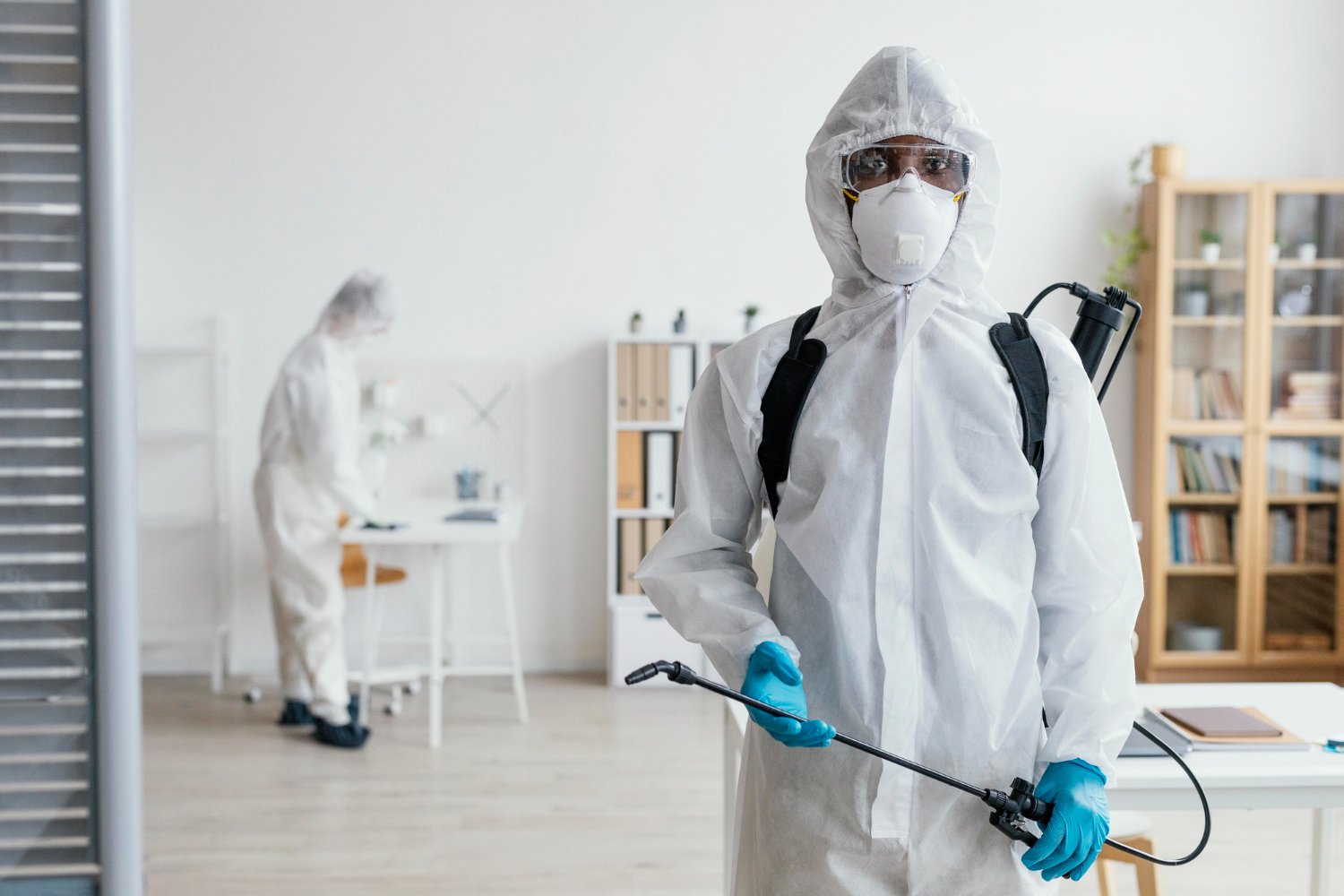Quality A1 Pest Control Services Charlotte - Secure Your Home
Wiki Article
Bed Pest Therapy Break Down: Contrasting Chemical Vs. Non-Chemical Solutions
In the realm of pest control, particularly when managing the consistent issue of bed pests, the option in between chemical and non-chemical therapy services can be a pivotal one. Both strategies offer distinct advantages and drawbacks, affecting factors such as performance, security considerations, and overall price. By taking a look at the nuanced details of each method, a clearer understanding of which path to seek in dealing with a bed pest infestation can be attained.Performance of Chemical Therapies
Chemical treatments for bed bug invasions have actually been extensively recognized for their powerful and rapid efficacy in eradicating these pests. When taking into consideration the effectiveness of chemical treatments, it is vital to comprehend that they can offer a fast and complete option to a bed bug issue.In addition, chemical therapies have the benefit of using recurring effects, implying that they can continue to remove bed pests even after the initial application. This residual activity is especially advantageous in combating any type of possible re-infestations. Additionally, the rapid action of chemical therapies can bring relief to people encountering severe bed bug infestations, enabling them to gain back control of their space rapidly.
Safety Interest In Chemical Solutions
When using chemical services for bed pest treatment is making sure the safety and security of residents and the setting,One essential aspect that requires mindful factor to consider. While chemical treatments can be reliable in eradicating bed pests, they may posture threats otherwise taken care of correctly. Among the key safety and security worry about chemical solutions is the prospective harm they can trigger to human wellness. Direct exposure to specific chemicals utilized in bed pest therapies can cause respiratory system problems, skin irritability, or other adverse responses, specifically in people with pre-existing conditions or level of sensitivities. Additionally, incorrect application or dose of chemical pesticides can lead to toxic deposits lingering in the treated area, positioning long-term health dangers to occupants.Furthermore, the environmental influence of chemical services is another considerable factor to consider. Some chemicals made use of in bed insect treatments might be unsafe to useful insects, wild animals, and ecological communities if they seep right into the dirt or water supply. It is necessary to utilize chemical therapies sensibly, adhering to safety and security standards, and taking into consideration much less hazardous options to reduce these threats and make certain the effective and safe monitoring of bed pest infestations.
Benefits of Non-Chemical Methods
Thinking about the possible safety and security worries and environmental influence related to chemical solutions for bed insect treatment, checking out non-chemical strategies offers an appealing choice with numerous distinct benefits. Non-chemical methods offer a much safer alternative for households, especially those with youngsters, people, or family pets delicate to rough chemicals. These techniques remove the risks of exposure to hazardous substances, decreasing the capacity for damaging health and wellness results. Moreover, non-chemical treatments are environmentally friendly, as they do not add to air or water air pollution, making them a lasting option for pest control.Furthermore, non-chemical remedies can be effective in targeting bed insects, including hard-to-reach areas where chemical therapies might not penetrate - A1 pest control services charlotte. Approaches such as heat therapy, vacuuming, heavy steam cleaning, and bed mattress coverings offer thorough eradication without the use of hazardous chemicals.
Limitations of Non-Chemical Treatments

In addition, non-chemical treatments usually need numerous applications to accomplish successful elimination. This can be taxing and might not always ensure full elimination of all bed pests and their eggs, especially in hidden or hard-to-reach locations.
Additionally, the success of non-chemical therapies heavily counts on appropriate application and thoroughness, which can be challenging for individuals without expert know-how. Inadequate application of non-chemical approaches may result in incomplete obliteration, resulting in relentless invasions and the need for added therapies.
For that reason, while non-chemical therapies have their benefits, it is vital to recognize these restrictions and consider them when identifying one of the most reliable method for handling bed insect infestations.
Price Contrast: Chemical Vs. Non-Chemical Options
Offered the limitations associated with non-chemical therapies, a necessary element to examine in the context of bed bug administration is the cost comparison in between chemical and non-chemical options. Chemical treatments usually include the application of pesticides by professionals, which can range from $250 to $900 per area, depending on the intensity of the problem and the dimension of the area to be dealt with. In contrast, non-chemical therapies like warmth treatment or steam can be much more expensive, with expenses ranging from $1,000 to $6,000 for an entire home. While the initial cost of chemical treatments may appear reduced, several treatments may be needed to completely eradicate the problem, possibly increasing the total expense. On the other hand, non-chemical choices might offer a more lasting and environment-friendly option, although they can be cost-prohibitive for click for more info some people. Eventually, when considering the price of bed insect treatment alternatives, it is necessary to evaluate the upfront expenses versus the efficiency and long-term sustainability of the picked method.Final Thought

Thinking about the prospective security issues and environmental influence linked with chemical solutions for bed bug therapy, exploring non-chemical methods offers an appealing option with a number of unique benefits.Given the limitations linked with non-chemical treatments, a crucial element to examine in the context of bed insect management is the price contrast between chemical and non-chemical options. In comparison, non-chemical therapies like warmth therapy or vapor can be more pricey, with costs ranging from $1,000 to $6,000 for a whole home. While the first price of chemical treatments might seem reduced, several therapies might be needed to completely eliminate the infestation, possibly increasing the total cost.In verdict, when contrasting chemical and non-chemical bed insect therapy choices, it is essential to consider effectiveness, safety, benefits, limitations, and cost.
Report this wiki page